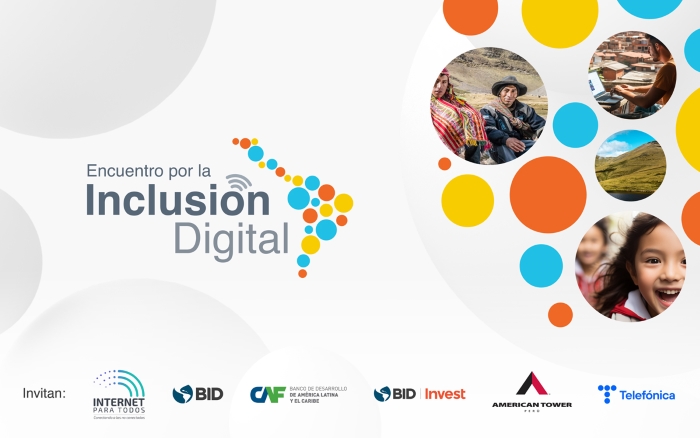Multiple opportunities have opened up for the reduction of the digital gap in Latin America thanks to the expansion of networks and the massification of internet access. In fact, connectivity today enables us to work and study from any location, receive remote medical care or create businesses and employment opportunities. Thus, the internet opens up and generates a world of possibilities that facilitate greater development for societies and individuals. However, while these opportunities are available to some, Latin America is worryingly consolidating its position as the second most unequal region, according to ECLAC reports.
Bridging the digital divide for equal opportunities
According to the GSMA, mobile internet access has doubled in the region, from 220 million people in 2014 to nearly 400 million in 2021. However, there are still 230 million unconnected citizens. Of these, around 190 million people live in areas covered by mobile internet networks but do not have Internet access. Therefore, on one hand, we need to make efforts to ensure that networks reach remote and orographically hard to access. On the other hand, we also need to reduce the usage gap.
All of the above translates into millions of households not having equal opportunities and, as in so many other complex situations, the most affected are always the most vulnerable socio-economic groups.
The figures make evident the nature of this worrying situation, as the gaps increase in vulnerable groups such as women, children, the elderly, ethnic groups of indigenous peoples or people living in rural areas. Without going any further, according to ECLAC, “in countries with greater connectivity, penetration in rural areas reaches 40% and/or 50% of the population, while in those with less digital development, penetration (in rural areas) averages 10% of the population”.
How can this problem be tackled?
It is crucial to work decisively to promote digital inclusion in the countries of the region and to reflect on what the best ways to accelerate the process of ownership may be. To this end, it is urgent to create spaces for conversation, debate and the exchange of ideas and experiences to identify disruptive models and find ways to implement them quickly. In this context, the “First Meeting for Digital Inclusion in Latin America” is born, which will take place in Lima, Peru, on November 7th. The initiative aims to involve all sectors in this conversation, including the general public, which is key in this context, and will be broadcast live via streaming around the world.

Why is it important to talk about digital inclusion?
Once again, the numbers provide a better context for the situation according to ASIET, a 1% increase in the digitisation rate would generate a 0.3% growth in the countries’ GDP. Numbers – sometimes allies and sometimes villains in certain stories – also confront us with the harsh reality and the need to accelerate this dialogue to bring connectivity truly for all: attracting more sustainable investment to the region would allow us to close the coverage gap (7% in 2021, according to GSMA) and the usage gap (31%, according to the same report).
These large investments cannot be undertaken by the telecommunications industry alone; they require other stakeholders to contribute to make them sustainable. In fact, closing the digital gap in Latin America requires an investment of US$68 billion, according to estimates by the IDB.
This requires a conducive investment environment with legal certainty, regulatory and tax predictability, strategic public investment focused on maximising social welfare, as well as the participation of private and public, local, regional and international actors. In this way, we will be able to connect particularly vulnerable areas in each of the countries of the region.
As participants in this industry, we believe that many actions are needed to reduce the digital gap for millions of people. This is why spaces such as the “First Meeting for Digital Inclusion in Latin America” are so relevant. Let’s come to an agreement and take action. The future and opportunities of millions of people depend on us establishing a roadmap that accelerates the arrival of the digital world throughout the region.
To watch the First Meeting for Digital Inclusion in Latin America, on 7 November, click here.








